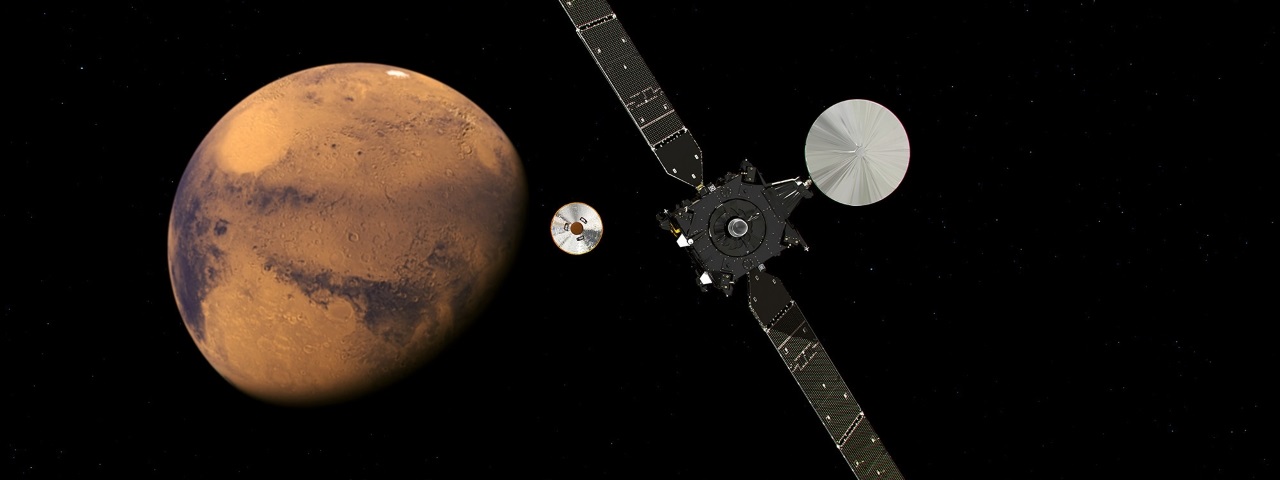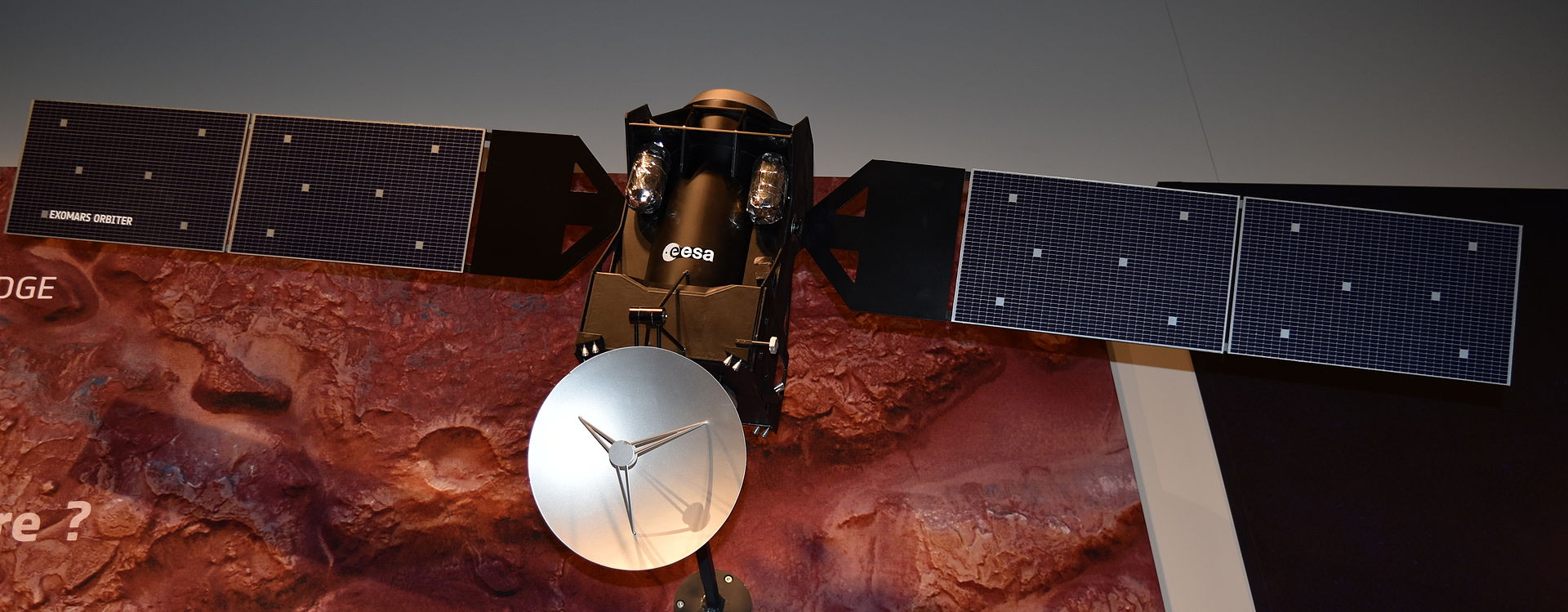ESA: Martian probe Schiaparelli crashed due to incorrect height determination during descent

Experts of the European Space Agency (ESA), after a thorough analysis of the telemetry of the Schiaparelli module descent, of the Russian-European mission ExoMars, found the reason for the fall of the device. As it turned out, the accident occurred due to an error in the inertial measurement unit. The device was supposed to sink to the surface of Mars on October 19 of this year. At first, everything went according to plan: the Schiaparelli entered the atmosphere of Mars at a design speed of 21,000 km / h and began to slow down due to aerodynamic deceleration.
Already at an altitude of 11 km, the speed of the apparatus dropped to 1,700 km / h. At this time, a parachute turned over the Schiaparelli, and after 40 seconds the probe dropped the front part of the protective casing with the heat shield melted. All the time the device was descending, it sent all the necessary telemetry to Earth. Unfortunately, 50 seconds before landing, the device stopped giving signs of life: the signal disappeared .
A couple of days later, the device was recognized by ESA as lost, after some time, scientists discovered the probable site of the fall of the probe. As far as you can understand
Schiaparelli hit a surface at high speed, and probably exploded.
')
European scientists say that when the probe entered the atmosphere, a unit that measures angular velocities gave the basic control system incorrect elevation data at which time the device was located. The height of the measuring module was given with a minus sign, as if the device was below the surface of Mars. The control unit responded by shooting a parachute, turning on the brake motors and activating the landing system. Immediately turned on and instruments that were supposed to work already on the surface of Mars.
“We know that after the parachute was triggered, the engines turned on for only a few seconds, after which Schiaparelli fell from a height of two to four kilometers, crashing into the surface of Mars at a speed of about 300 kilometers per hour,” said Markus Bauer, a representative ESA.
The causes of the incident will be clarified further - the final accident report will be submitted to ESA not earlier than 2017.
At the same time, on October 19, another ESA apparatus, Trace Gas Orbiter, successfully entered the Mars orbit. This is an orbital system, the purpose of which is to study the nature of the occurrence of components such as methane, water vapor and other components in the atmosphere of Mars. About their presence in the atmosphere of the red planet is known since 2003. Methane is of particular interest to scientists, because this gas quickly decomposes under the influence of ultraviolet radiation (Mars has a fairly high level of UV radiation). Thus, since methane is conserved in the atmosphere, it must constantly come from some source. Such a source can be either geological activity or biochemical processes of the biosphere — that is, living organisms.

If Trace Gas Orbiter discovers that methane is accompanied by propane or ethane, this will be an indirect indication of biological processes. If sulfur dioxide is detected in the atmosphere of the red planet, scientists will indirectly confirm the generation of methane by some geological processes.
The orbital probe will also help determine the regions of Mars where methane is released. The data is necessary in order for the Exomarss spacecraft to land at one of these sites, where it will conduct a search for a possible life.
The following scientific instruments are installed on the orbiter:
- NOMAD (Nadir and Occultation for MArs Discovery) - infrared and ultraviolet spectrometers;
- ACS (Atmospheric Chemistry Suite) - a set of three infrared spectrometers to study the chemistry and structure of the atmosphere of Mars;
- CaSSIS (Color and Stereo Surface Imaging System) - a high-resolution camera (4.5 m per pixel) capable of receiving color and stereo photographs;
- FREND (Fine Resolution Epithermal Neutron Detector) - this neutron detector will detect the presence of hydrogen from the surface to a depth of 1 meter, and thus detect the location of water ice near the surface.
Trace Gas Orbiter - part of the program "Exomars." The spacecraft was launched into space with the help of the Proton-M launch vehicle.
Source: https://habr.com/ru/post/399529/
All Articles